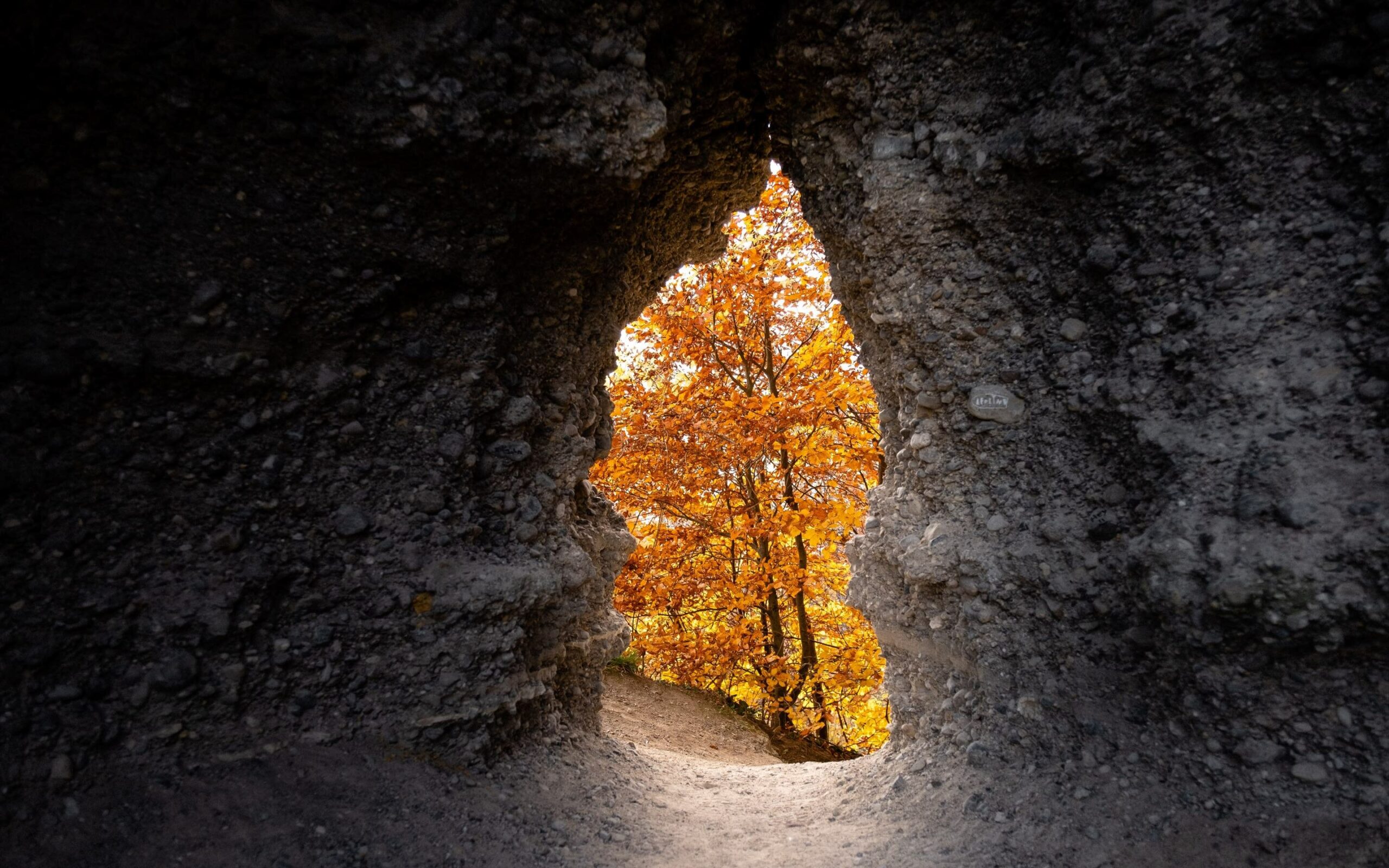
Want to learn how to create interesting photographs that draw your viewer in? Framing is one way to do it.
But what is framing in photography exactly? And how can you use it in your own work? Let’s take a look at everything you need to know.
What is framing?
The way you compose your image can make the difference between a good image and a great one – and framing is one of the key compositional techniques.
When framing a photograph, you’ll select different elements within the scene, or use surrounding objects to create a frame within the image. You might use natural elements like tree branches to create a frame around your subject, or you could use things like doorways and buildings.
Think of an image of a mountain, shot from inside a tent, so you can see the doorway of the tent looking out onto the mountain. You know the scenery is expansive, but you can only see a snapshot of it. It creates a completely different photograph than if you were simply to shoot the mountain in all its glory.
Or how about a photograph taken from high above the clouds, looking down – but it’s taken from inside a plane window. The window acts as a frame, and you can only see the portion of sky that’s visible from that particular seat on the plane.
These are both examples of framing. In these examples, the frame helps to control the narrative of the image. Framing allows you, as the photographer, to show a particular point of view and tell a story.
Choosing what you’ll leave out of the photo is just as important as what you include. It’s all about creating a composition that draws the viewer’s eye towards your subject.

Why is framing in photography important?
Unlike other photography terms like shutter speed, framing has nothing to do with the way your camera works. Instead, it’s more about understanding what makes a good photograph, and using that knowledge to create an eye-catching image.
Framing plays a crucial role in composition, which is the way elements are arranged in your photograph. Not all photographs need to use framing – it’s just one of many compositional techniques available to you as a photographer.
When there are natural frames within a scene, it might be a natural choice to use framing. But if not, other composition techniques like the rule of thirds or symmetry might be more appropriate instead.
But if you do choose to use framing, it can help you to tell a story. It’s a great way to get creative with your art, allowing you to experiment with different frames to show different perspectives, add depth to your image, and ensure your subject stands out.
Framing shows the viewer where they should be focusing their attention and draws them away from any distracting elements of the photograph by highlighting the subject.
It also adds depth to your images. The extra layer can help your photos to feel multidimensional, rather than flat or static.
Framing techniques
There are lots of different ways you can play around with framing to draw the viewer’s attention and create a more impactful image. Here are just some of our favourites:
Leading lines
Leading lines are elements within an image that guide the viewer’s eye towards the main subject of the photo. They could be actual physical lines like roads or paths, or implied lines which have been created by the arrangement of elements within the frame.
Imagine a path that starts in the foreground of a photo, winding its way up to a house. The path invites the viewer to trace their way along it before arriving at the main subject of the image, the house.
Natural frames
Some elements within nature create perfect natural frames for your subject. Think of tree branches, leaves, rocks and natural arches. To create a striking image that highlights your subject, place it within this natural frame to draw attention to it.
This can be a fun technique to explore when shooting portrait photography, providing a more natural background than a traditional studio shot.

Architectural elements
Doorways, windows, archways – there are endless architectural features that can serve as frames for photographs. But you could also think about less obvious frames such as bridges, streetlamps, curtains, blinds, fences and stairways.
These techniques can work particularly well with street photography, helping to draw attention to your subject within a busy scene.
Light and shadow
You can also go more abstract with your frames, by working with light and shadow to highlight your subject. Light can draw attention to your subject in a more subtle, natural way – or the interplay of light and shadow can add depth to your image, making it more dramatic and helping your subject to stand out even more.
Similarly, silhouettes can create a nice frame if you capture the subject against a contrasting background to emphasise its shape.

Frame within a frame
Like the airplane example, you can use windows, mirrors, archways and doorways to create a frame within the photograph. This adds depth to your image and can make for a more interesting photo than if you were simply to shoot the subject on its own.
These are just some of the framing techniques you can use – and as you learn more about photography composition, you’ll discover others which can add an extra element to your images, whether you’re aiming to create a playful or serious photo.
Want to find out more about different photography techniques? Keep an eye out for a brand-new course coming from BBC Maestro soon. An Introduction to Photography by world-renowned photographer Rankin will break down the craft and art of photography into digestible lessons, covering everything from the basics of camera types to promoting yourself and networking.

Give the gift of knowledge
Surprise a special someone with a year's access to BBC Maestro or gift them a single course.





